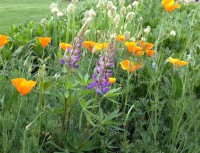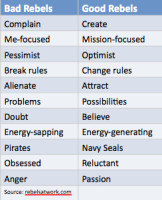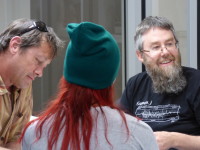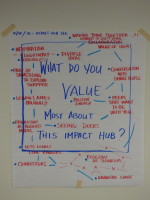One of my favorite books to read with my kids when they were younger is called Miss Rumphius, by Barbara Cooney. Written in the 1980s, it’s one of those books that isn’t just for kids.
What I remember from the basic story line is that Alice, a young girl who would become Miss Rumphius, tells her grandfather that she wants to be like him when she grows up. She wants to do two things. Travel to places far away. And return to live by the sea. Her grandfather acknowledges her with a good grandfatherly smile, and then challenges her to do one more thing. Make the world more beautiful.
 The story tells of Alice’s adventures around the world, and then coming to return to live by the sea. Now, grown, and aging herself, Miss Rumphius puzzles over how to make the world more beautiful. She sees wild lupines, loves them, and decides to order enough seeds to scatter to all places in and around her village. Some people thought she was crazy, walking with her hands in pockets, scattering seeds. Yet, a year later the seeds hand grown to plant and flower. Lupines everywhere! Pinks, purples, blues, whites. She became known in the story as The Lupine Lady. Miss Rumphius had made the world more beautiful.
The story tells of Alice’s adventures around the world, and then coming to return to live by the sea. Now, grown, and aging herself, Miss Rumphius puzzles over how to make the world more beautiful. She sees wild lupines, loves them, and decides to order enough seeds to scatter to all places in and around her village. Some people thought she was crazy, walking with her hands in pockets, scattering seeds. Yet, a year later the seeds hand grown to plant and flower. Lupines everywhere! Pinks, purples, blues, whites. She became known in the story as The Lupine Lady. Miss Rumphius had made the world more beautiful.
The part that I love to tell my kids is that they too can make the world more beautiful. Lupines are just a way in, just an example that they can connect with in the story. I tell them they have many options and choices that they don’t have to know now. Through their work, their hobbies. Through the things that they like to do. Through being with friends. The specifics matter less. The energy of beauty and and doing beautifully matters much.
I’ve used the story often, when departing for my work that involves travel. In the heart tugs that I have known of going away from my kids, I tell them, honestly, that I feel I’m trying to make the world more beautiful. I’d like to think they have come to know more about that over the years. A bit here and there about how I work as a facilitator to design and lead meetings so that people can be in meaningful conversations about the things that matter most to them. Be smart together. Be heart-filled together.
I smiled yesterday as my youngest child and I walked past one of our garden patches. Amidst the bloomed California Poppies, the Columbine, the greenery of what will become thick Daisies and Brown-Eyed Susans, the small green onion patch going to seed, and an Iris ready to bloom this week, a Lupine had showed itself in bloom. Three stems. I have been trying to grow these for a few years without much luck.
It gave me a moment to stop with Elijah and ask if he remembered the story of Miss Rumphius, The Lupine Lady (he’s more interested in Mindcraft, Sims, and other online environments these days). He did. He told me a pretty good version of it. And off we went, laughing together.
 Lois asked to interview me later this summer. She is researching how to lead change through hosting conversations around important questions. I don’t know if will stick, but I love her working title, “Be a Badass, Good-Hearted Change Agent: Getting Real About Leading Change.”
Lois asked to interview me later this summer. She is researching how to lead change through hosting conversations around important questions. I don’t know if will stick, but I love her working title, “Be a Badass, Good-Hearted Change Agent: Getting Real About Leading Change.”


